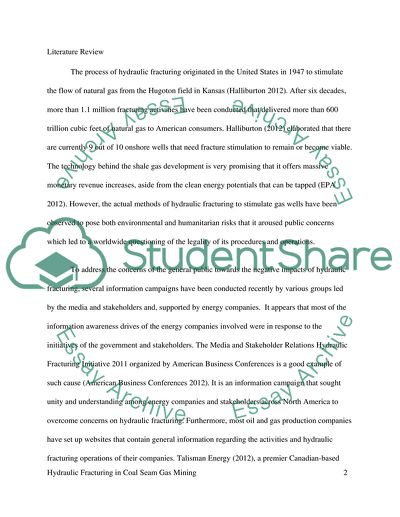Cite this document
(“Hydraulic Fracturing In Coal Seam Gas Mining Dissertation”, n.d.)
Retrieved from https://studentshare.org/environmental-studies/1594077-hydraulic-fracturing-in-coal-seam-gas-mining-evaluating-the-communication-strategies-of-the-industry-in-addressing-environmental-concerns
Retrieved from https://studentshare.org/environmental-studies/1594077-hydraulic-fracturing-in-coal-seam-gas-mining-evaluating-the-communication-strategies-of-the-industry-in-addressing-environmental-concerns
(Hydraulic Fracturing In Coal Seam Gas Mining Dissertation)
https://studentshare.org/environmental-studies/1594077-hydraulic-fracturing-in-coal-seam-gas-mining-evaluating-the-communication-strategies-of-the-industry-in-addressing-environmental-concerns.
https://studentshare.org/environmental-studies/1594077-hydraulic-fracturing-in-coal-seam-gas-mining-evaluating-the-communication-strategies-of-the-industry-in-addressing-environmental-concerns.
“Hydraulic Fracturing In Coal Seam Gas Mining Dissertation”, n.d. https://studentshare.org/environmental-studies/1594077-hydraulic-fracturing-in-coal-seam-gas-mining-evaluating-the-communication-strategies-of-the-industry-in-addressing-environmental-concerns.


